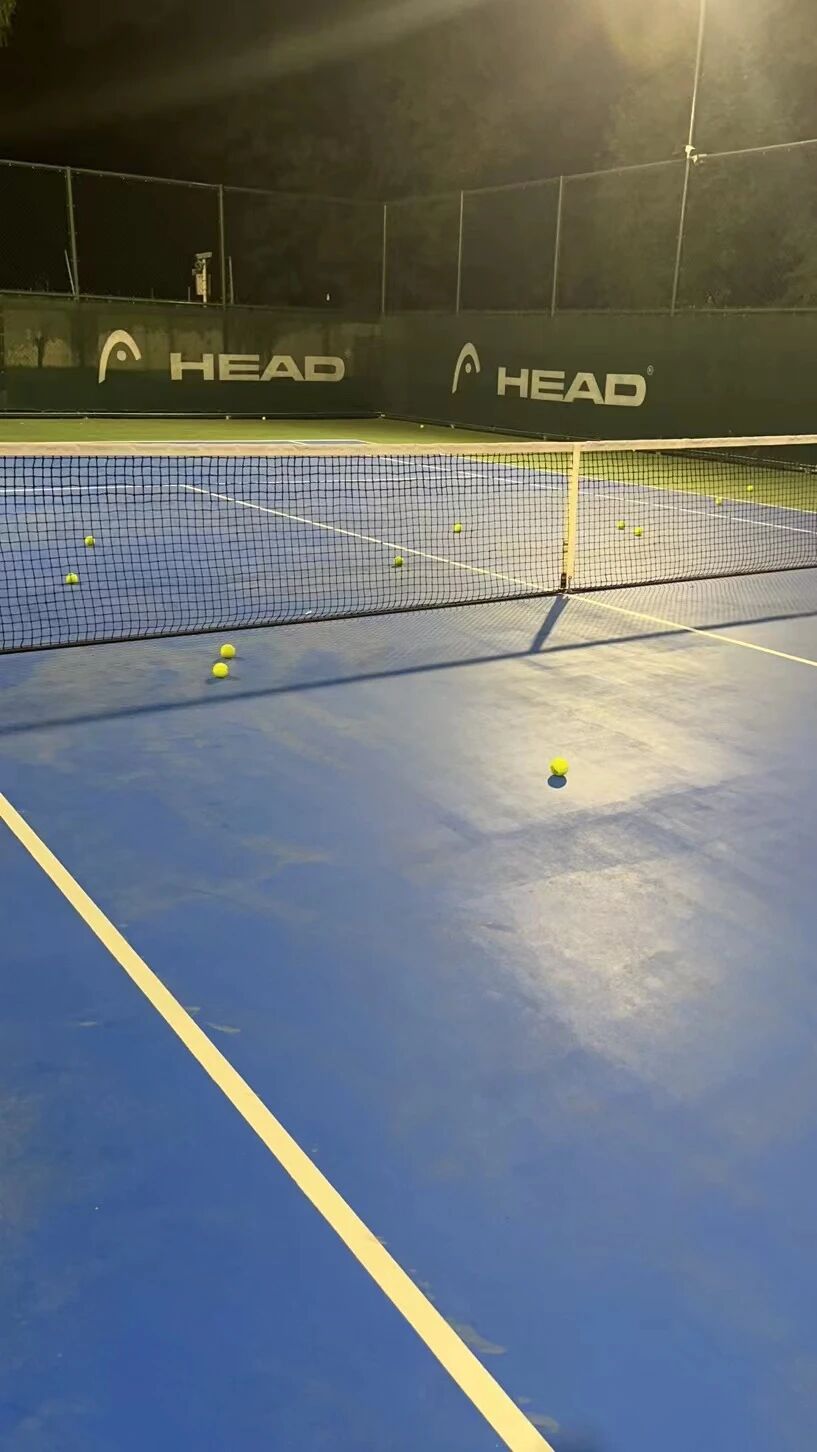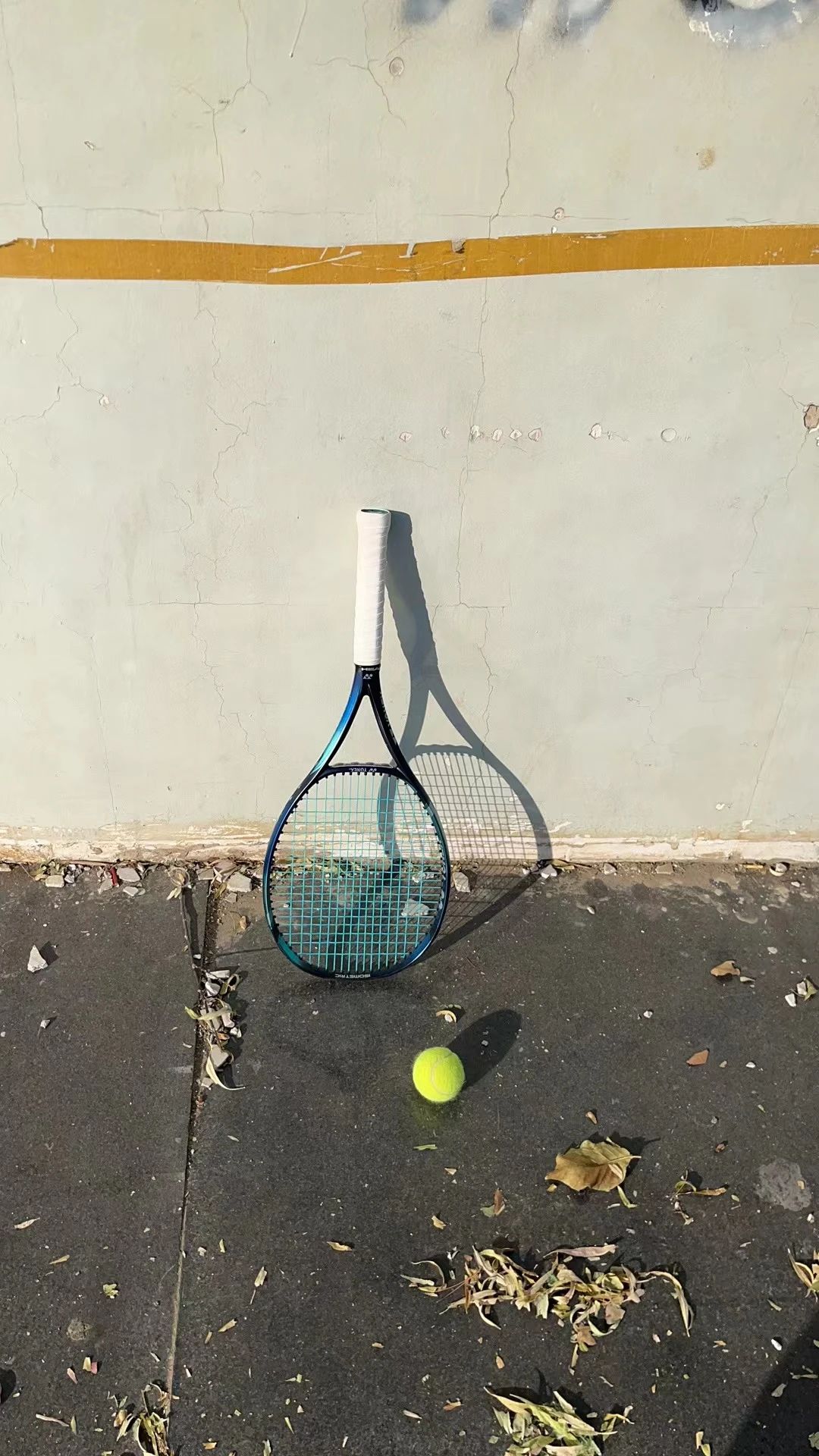The logic behind "developing the habit of straddling step"
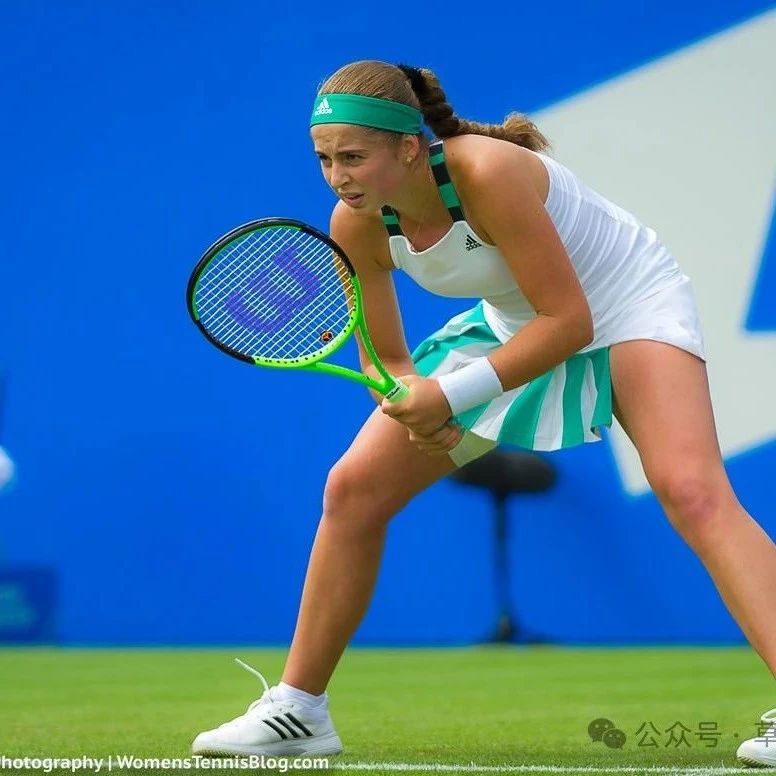
“Where’s the stepping move? Did you eat it again? If you don’t step properly, just stand over there!” the coach from the neighboring court barked at the little girl.
As the little girl burst into tears, a pang of unease stirred within the writer—what on earth has tennis, such an elegant sport, been reduced to?
After witnessing the training controversy, I decided to break down the logic behind "developing the habit of using a split-step technique" for fellow players—hoping this training mishap doesn’t happen again.
Here, the author first clarifies that the "split-step habit" is difficult to develop unless driven by external pressure.
"The split-leg stepping habit" follows a logical training approach, requiring coaches to guide players into naturally performing the "split-leg stepping" movement.
Behind every player's developed habit lies a clear logic—behavior stems from enhancing cognition, and as cognition improves, it leads to heightened sensitivity. Once sensitivity takes root, self-monitoring naturally follows, ultimately solidifying the behavior into a lasting habit.
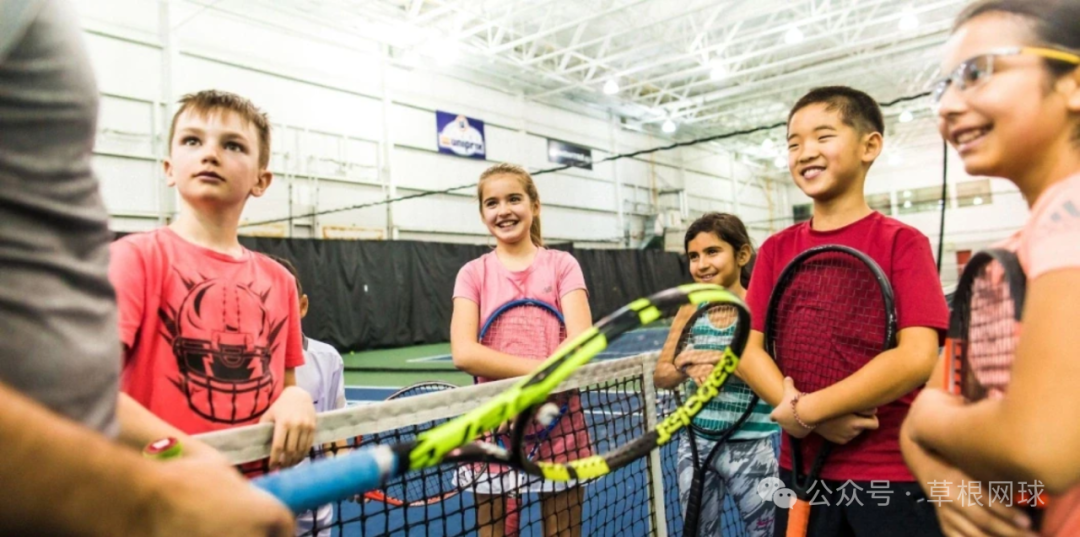
01
Why perform the straddle step?
The author believes that the "split-step habit" serves as a critical turning point determining whether a player can advance to the next level—thus, it’s essential to first clarify why the split step is necessary.
We often discuss "split-step pad" as a single movement, but in fact, it consists of two distinct actions: "splitting the legs" and "padding the step." Let’s now break them down and examine each one separately.
"Split" movement
The "split stance" movement serves two main purposes: one is to bend the hips and knees, lowering the center of gravity, and the other is to balance the center of gravity evenly between both feet.
"The straddle" movement is typically used in two scenarios:
First, when transitioning from a standing position to the ready stance, players need to perform a "split-step" movement to achieve hip flexion, lowering their center of gravity and shifting it between both feet.
Second, after making a wide-range movement, the player uses a "split-step" motion to counteract body inertia, redistributing weight across different parts of the body. This ensures the center of gravity remains firmly balanced between both feet, enabling a stable base from which to execute the hitting motion effectively.
The Relationship Between Straddle Leg Position, Hip Joint Flexibility, and Center of Gravity
In the batting motion, the quality of the leg-splitting action directly influences the speed of hip abduction/adduction, as well as the ability to lower the center of gravity through flexion.
Players frequently rely on the "abduction and adduction" function of both hip joints during rotational movements to achieve pelvic rotation. As ball-and-socket joints, the hips can only perform maximum abduction and adduction within a specific range of flexion—this is precisely why standing while playing and attempting quick rotations feels less efficient.
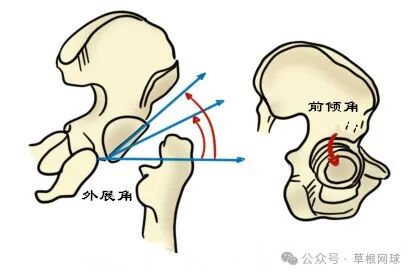
Finally, the split step effectively lowers your center of gravity—only when your center of gravity is positioned below the incoming ball can the racket naturally drop beneath it. This is the key to hitting high-quality shots in the backcourt. Unfortunately, many players, while swinging the racket forward, end up straightening their back leg at the same time, thereby negating the entire purpose of the split step.
So, when a player prepares to receive the serve by standing with feet wider than shoulder-width apart and immediately bending at the hips to squat down—does that count as a split stance?
How can it not count? That’s called a straddle! Straddle movements don’t always have to be initiated with a jump—simply spread your feet apart, hinge at the hips and bend your knees, and you’ve got it perfect!
"Pad Step" Movement
To understand the "pad step" movement, we must start with the structure of the foot—humans can walk either on the balls of their feet or on their toes.
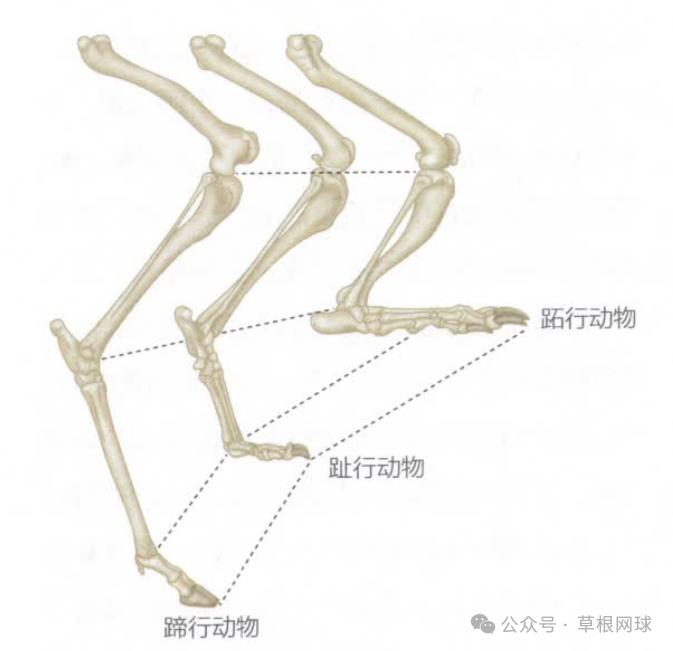
The advantage of walking on the balls of the feet is that it enhances the body's ability to bear weight and makes walking more stable. However, since the toes, metatarsals, and tarsals all remain in contact with the ground, this significantly reduces running speed and agility.
Digitigrade locomotion frees the long metatarsals and weight-bearing tarsal bones, enabling humans to generate greater explosive power while running and grip the ground more effectively.
When players are engaged in intense physical battles, they need to move swiftly and generate powerful bursts of energy—clearly, relying on a heel-to-toe gait is far too slow. That’s precisely why maintaining "the back heel off the ground while keeping your center of gravity firmly planted on the balls of your feet" is crucial.
Additionally, "pad stepping" requires training in conjunction with movement patterns; only by mastering the correct power-generation technique can its full potential for rapid acceleration be realized.
02
Static balance is the foundation.
Static balance is the foundation of dynamic balance. For players to naturally execute the "split-step" movement during physical confrontations, it’s essential to assess whether they possess the ability to assume a proper "static preparatory stance."
Let’s first take a look at Nick Politeini’s “powerful ready stance,” which represents perfect static balance.
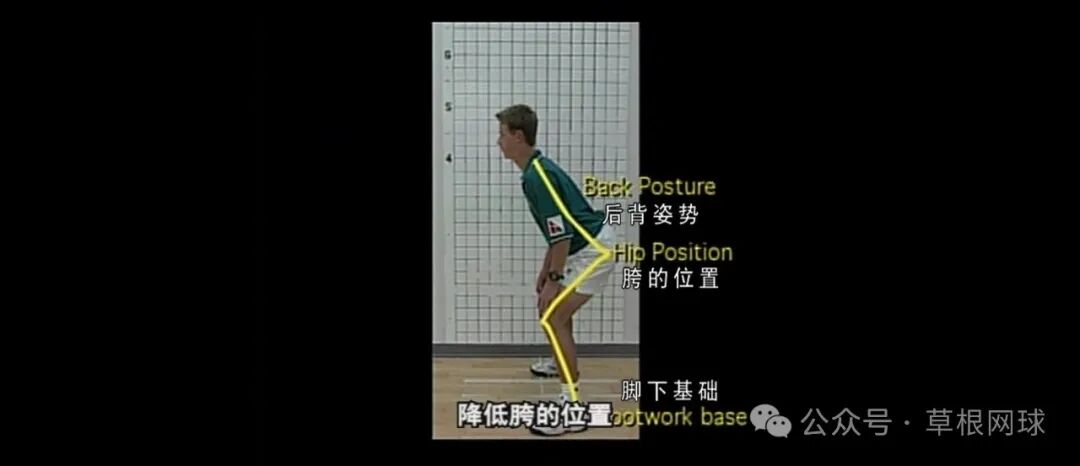
A strong preparatory stance
The key details of this pose include: straightening the lower back, dropping the shoulders, bending the hips and knees, dorsiflexing the feet, arching both foot arches to support the entire body, and lifting the heels off the ground.
What appears to be a simple squatting stance is actually quite challenging for amateur enthusiasts without a solid fitness foundation to execute the "ready position" that fully meets these key requirements.
Among the players I’ve worked with, several common postural issues have been limiting their stability in the preparatory stance.
First, weakness in the gluteus medius and gluteus minimus muscles leads to "difficulty squatting when hip abducting."
Modern-day people who sit for long periods gradually weaken the muscle groups on both sides of their hips. Many athletes, when faced with an incoming ball, instinctively lower their center of gravity and immediately crouch down with their legs together—precisely because their gluteus medius and gluteus minimus muscles have become too weak. This leads to…
It prevents them from completing the task of "hip flexion under hip abduction conditions."
Second, lower limb alignment disorders lead to knee joint instability.
When getting into the ready position, the "hip-knee-ankle joint" should align on the same vertical plane to minimize stress on the knee joint. Unfortunately, many players have their lower-body joints misaligned, causing the menisci on both sides of the knee to be compressed. In this condition, it becomes difficult to bend the knees properly—and even if they do manage to flex, maintaining that position for an extended period is nearly impossible.
Third, overuse of the ankle leads to a loss of stability due to excessive flexibility.
The human foot is an incredibly intricate structure: simply put, when the ankle moves outward, the foot naturally spreads and relaxes, making it ideal for standing. Conversely, when the ankle rolls inward, the entire foot locks into a rigid, unified shape, enhancing stability during walking and running. Unfortunately, many amateur athletes lose their ability to properly lock the ankle after overusing it, leading to excessive stretching of the arch—this is precisely why they struggle to maintain balance while stepping in place.
Without the ability to maintain static balance, after the step-and-jump motion, your heel might slam heavily into the ground—rendering the entire movement completely ineffective.
Improving a player's "static balance in the ready stance" is the first step toward developing the habit of using the straddle step.
When evaluating players' fundamental balance abilities, coaches should pay close attention to whether players can maintain their balance for an extended period while adhering to proper posture requirements.
The longer a player maintains a balanced ready stance, the more fluid and confident their split-step movement will become during intense physical confrontations.
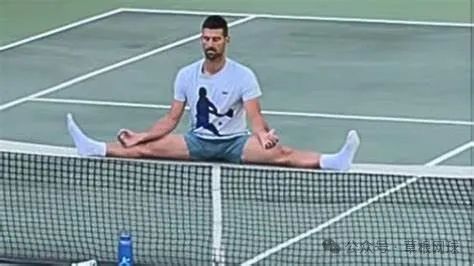
03
Practicality above all else
On the spectrum of rational choice, the coordinates of human nature always point toward utility maximization.
In other words, without letting the players experience the benefits of the split-step technique, can they possibly follow their coach's instructions properly?
Everything starts with pragmatism—cultivating the habit of split-step footwork among players requires scientifically and rationally designed training to guide them effectively.
Next, the author presents two examples of training designs, hoping to inspire further discussion and ideas.
First, when teaching beginners, the author will place greater emphasis on the straddle movement while downplaying the need for stepping motions.
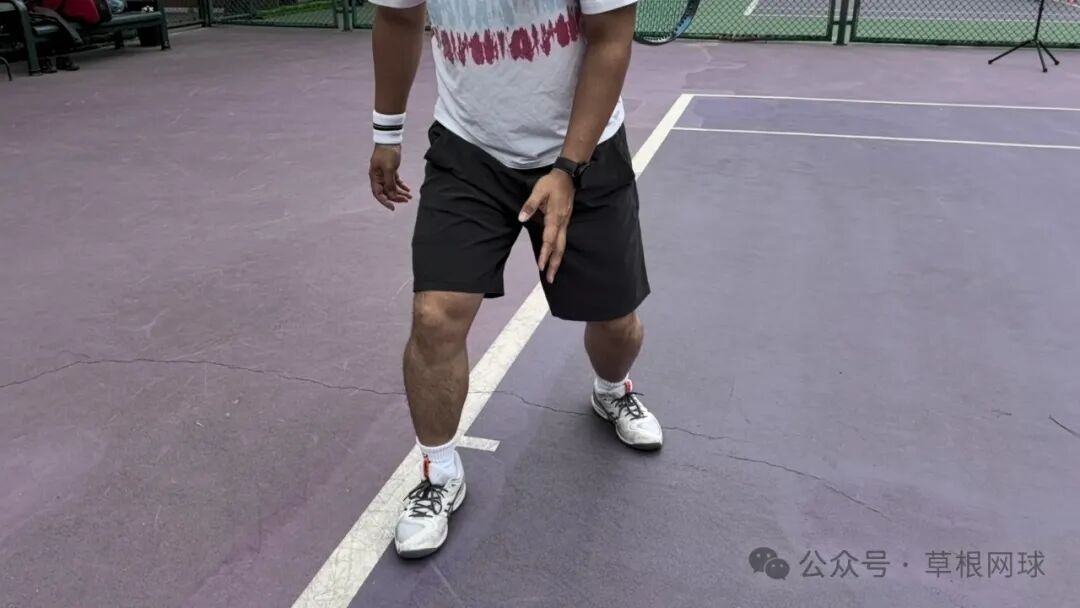
Beginners place the highest priority on the ability of pelvic stability and rotation to drive the upper-body movement. When practicing stationary hand throws, there’s no need to introduce the transition from a standing position into a ready stance until the player has already developed a solid sense of ball control.
We can allow players to start directly from the ready position—even if, in the initial phase, the back heel isn’t elevated; that’s perfectly acceptable.
Splitting the legs is the most important move when you're a beginner—this technique determines whether a player can lower their center of gravity and execute quick hip-abduction and adduction movements with rapid body rotations.
After the player is able to execute a complete, fluid swing, introduce the task of transitioning from the standing position into the ready stance, while emphasizing the need for the lower body to remain flexible during the step-in motion.
Coaches should reinforce the "hip abduction and adduction" quick-turning pattern, helping beginners quickly memorize the benefits of widening their legs.
Second, for advanced players, design "retreat-step-driven" footwork drills to reinforce movement patterns.
"Retraction-step drive" training requires participants to keep their upper body stationary while externally rotating the hip joint in the direction of movement, with the same-side foot retracting to the opposite side of the body's midline.
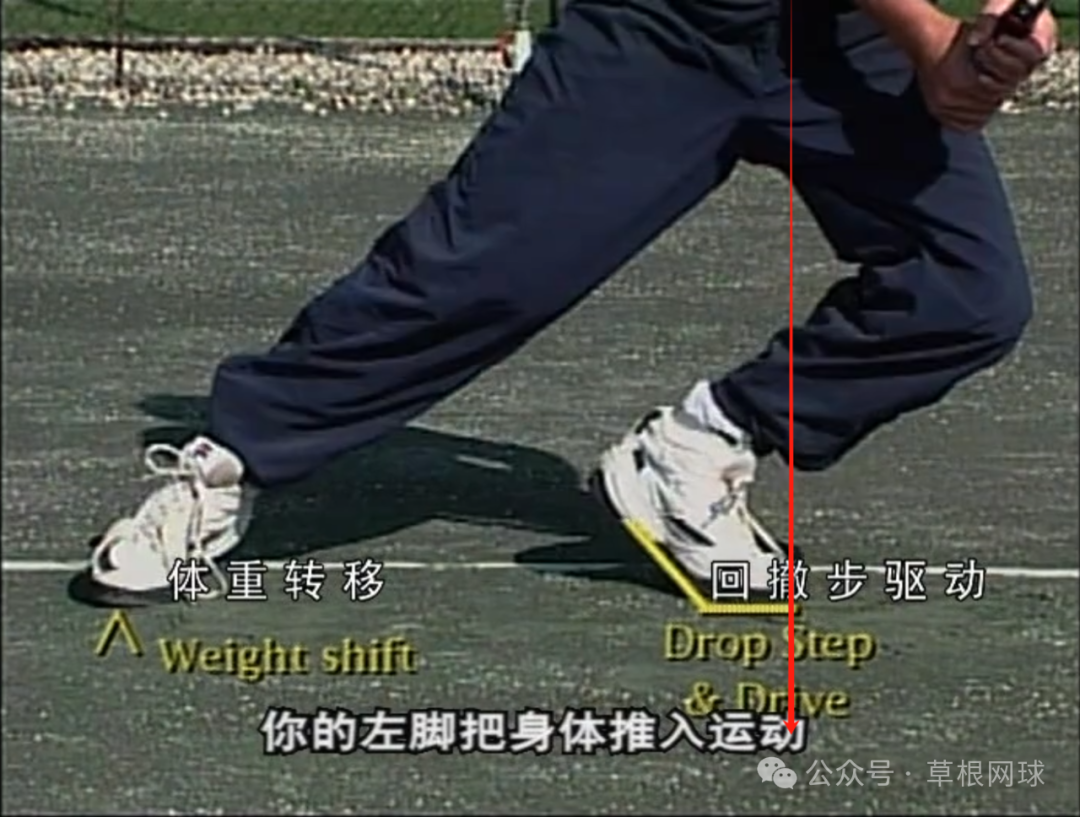
We can have players compare stepping in place versus not stepping, and we’ll find that:
Under the crouching-step condition, players feel as though their entire body is being pulled forward by their center of gravity. Because it becomes difficult to maintain balance after retreating into the step, this type of start is incredibly quick.
Under the condition of not stepping forward and keeping the heel off the ground, our body naturally generates resistance. Without sufficient dorsiflexion of the foot, it becomes difficult to bring the same-side leg across the body’s midline to the opposite side. This exercise can only be completed by lifting the back heel again.
The stepping motion is the key initiator for "recoil-step-driven" training, helping players develop the sensation of being pulled forward by their center of gravity and steadily reinforcing the movement pattern—allowing them to quickly experience the rewarding ease of rapid movement that follows this technique.
After these guided drills, I’m confident no advanced player will ever forget the necessity of the split step—nor will any athlete fail to grasp the subtle difference between "stepping in place" and "not stepping at all."
04
Closing remarks
Every coach with ambition should remain steadfast in their pursuit of better teaching methods, using this passion for tennis as their driving force—no matter how murky the teaching environment may seem, or how uncertain the path ahead feels. Never stop questioning, and always strive for limitless improvement.
Who hasn’t weathered storms and heavy rains—stay strong, and you’ll see the moon shining brightly through the clouds!
